2015 International Scuba Diving Hall of Fame Inductees & Early Pioneers
The International Scuba Diving Hall of Fame is dedicated to the pioneers of diving, celebrating their contributions in the field of dive travel, entertainment, art, equipment design and development, education, exploration and adventure.
If you are interested in attending this years awards ceremony to take place in October on Grand Cayman, visit www.caymanislands.ky/eventsoffers/scubadivinghalloffame/packages
The International Scuba Diving Hall of Fame is dedicated to the pioneers of diving, celebrating their contributions in the field of dive travel, entertainment, art, equipment design and development, education, exploration and adventure.
If you are interested in attending this years awards ceremony to take place in October on Grand Cayman, visit www.caymanislands.ky/eventsoffers/scubadivinghalloffame/packages
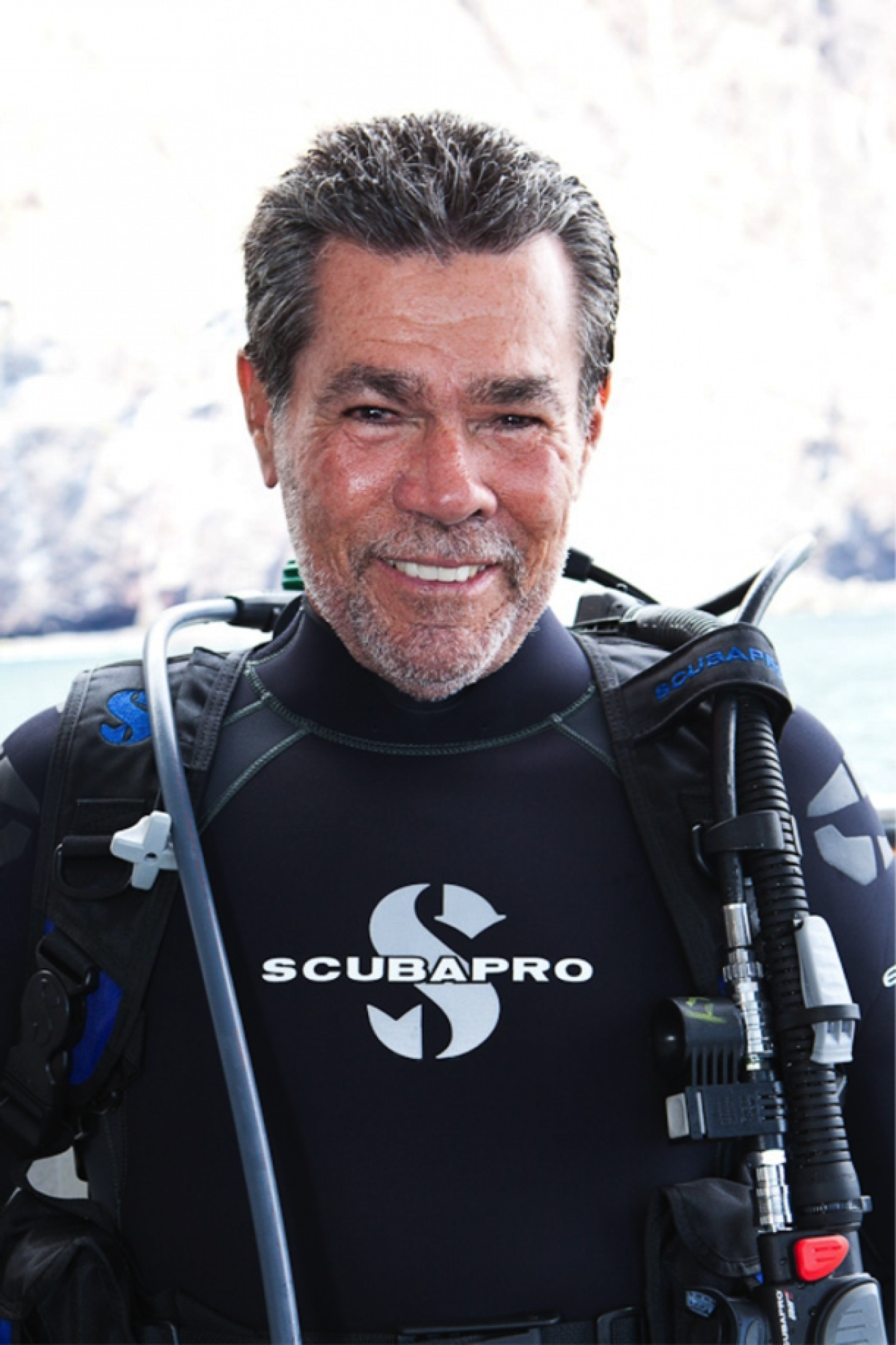
International Scuba Diving Hall of Fame.
Inductee: Peter Hughes
Significant career achievement or industry contribution
Caribbean Instructors Peter Hughes has been a major developer of Dive Resorts including Anthony’s Key Resort and Dive Bonaire before becoming Vice President of the network of Divi Resorts. He then entered the development of the live-aboard market with the Dancer Fleet, a field he still continues to be active in.
It's hard to imagine how the dive industry could have become what it is today without Peter Hughes. Over the years, innovators in diving have transformed our gear and our training. But it's Peter who not only transformed how we enjoy diving, but who goes diving.
Learning to dive as a boy, by the late '60s, Peter was already involved in dive travel. Only 21 years old, as director of Tobago's Camp Crusoe he oversaw one of the first Caribbean scuba programs. He became an instructor in 1969, and couple of years later, Peter seized an opportunity that would change diving forever. It was that year that Peter took over a failing dive operation on Roatan that no one had ever heard of. It was a rustic, hole-in-the-wall resort for sailors and a handful of hardcore divers, that, over the next three years, he reshaped into the first modern, attractive dedicated dive resort. It's called Anthony's Key Resort.
In 1975, Peter was ready for a new, bigger challenge. He relocated to Bonaire, and in 1977, jumped on another dive resort that was up for auction, converting it into Dive Bonaire NV. Over the next eight years, Dive Bonaire drew attention and imitators as Peter "killed" some of diving's sacred cows. Dive Bonaire axed the idea that, "If you can't carry your tank you can't dive," and replaced it with "Let us do it for you."
Under Peter's leadership, Dive Bonaire ushered in the customer-centered philosophy that has become the hallmark of the modern dive resort. It seemed as though he rolled out innovations, almost daily. One was fill stations on the dock and boats. Why take the tank to the air when you can take the air to the tank? Another was boats actually intended for divers -benches with cylinder racks and ladders divers can climb - things we all take for granted today. Dumping the chest thumping, he expanded participation by women, and ultimately, older persons, those with physical challenges, and others excluded by the old school view.
As Peter's idea of the modern dive resort grew, and so did his contributions. In 1985, he became Vice President of Divi Resorts, which developed dedicated dive resorts throughout the Caribbean. In 1986, while still with Divi, Peter introduced Sea Dancer - the vessel that did for liveaboards what Anthony's Key did for resorts. Sea Dancer radically reshaped dive liveaboards by replacing rustic with comfort, but 1992, now as President of Peter Hughes Diving & the Dancer Fleet, Peter upped the ante with Wave Dancer luxury liveaboard aimed squarely at attracting female and upscale divers. Wave Dancer replaced bunks with suites, paper plates with china, and "nickel-and-dime-you-to-death" with all-inclusive pricing. An innovator who transformed the dive resort and liveaboard, Peter's operations have remained closely involved with environmental preservation. He was among the first operators to install dive site moorings to reduce anchor damage to the reefs. And, Peter is equally dedicated to sharing his experience by training rising dive travel leaders at all his destinations. He's been outspoken before government about the economic benefits and importance of diver tourism.
Having sold Peter Hughes Diving in 2008, this year Peter founded a new venture, the DivEncounters Alliance, aimed at the needs of smaller, independent liveaboard vessels, including Galapagos Sky.
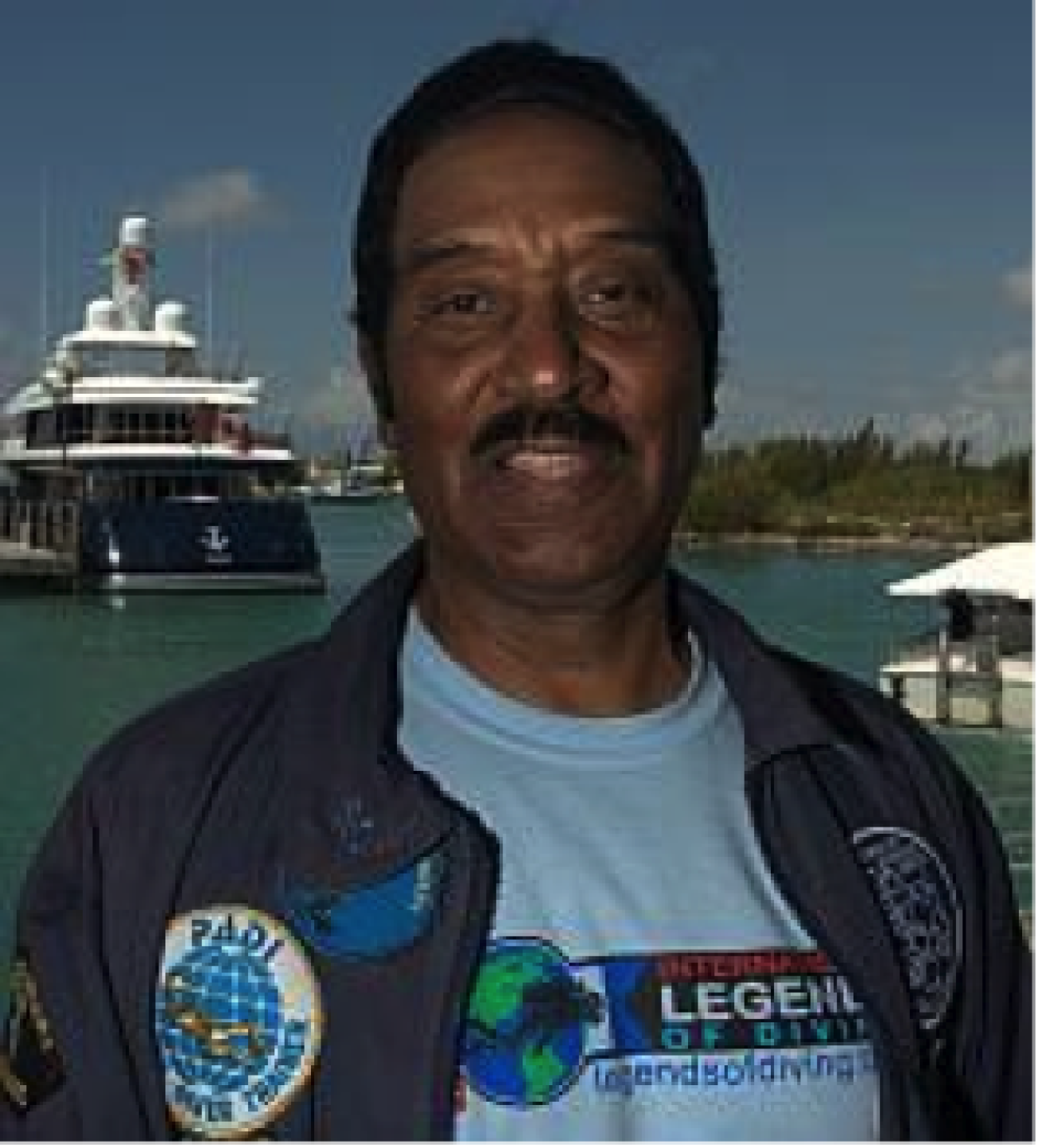
International Scuba Diving Hall of Fame.
Inductee: Dr. Albert José Jones
Significant career achievement or industry contribution
Dr. Jose Jones was a early pioneer and Instructor, who has been directly responsible for the development of many Dive clubs ranging from Underwater Adventure Seekers to the National Association of Black Scuba Divers with more than fifty branches. He continues to motivate and introduce students with his passion for marine science, environmental science and the career opportunities in these fields.
One of diving’s earliest pioneers and instructors, Dr. Jones has dedicated much of his life to bringing people into scuba, and the marine and environmental sciences. He began diving while in the Army in the 1950s, quickly becoming involved with the dive community in the Washington DC area. While still in college in 1959, he founded Underwater Adventure Seekers (UAS), which exists to this day as one diving’s most successful dive clubs. UAS was a member club of the Atlantic Skin Diving Council (ASDC), and Dr. Jones began teaching as an ASDC instructor in 1962 before the wide-spread acceptance of national certifications. In 1970, he became a PADI Instructor.
In 1991, with the UAS as its core, Dr. Jones and Ric Powell founded the National Association of Black Scuba Divers (NABS) to address the unique concerns of African-American divers. In fewer than five years, NABS had united more than 50 clubs, providing a network for divers to involve themselves in local and distant diving, underwater research and other activities. Today, NABS continues to fulfill its charter of bringing people into diving and giving its members opportunities to meet and dive together.
With more than 50 years experience and 6000 dives logged, Dr. Jones has been instrumental in introducing literally thousands of people to diving. Today he continues to share his passion by speaking to students about career opportunities in diving, marine science and environmental science. Beyond dozens of published papers and articles by him and about him, here are just a few of Dr. Jones’ many lifetime achievements:
• Fullbright Scholar, Marine Biology, University of Australia
• PhD, Marine Biology, Georgetown University
• Professor and Professor Emeritus of Marine Science/Environmental Science • • University of District Columbia
• 7th Degree Black Belt, Tae-Kwon Do, with multiple karate championships
• SSI Platinum 5000, 1995
• NABS founder, 1991 and NABS Hall of Fame, 2004
• CMAS Two-star instructor, 1977
• PADI Open Water Scuba Instructor, 1970
• DAN/Rolex Diver of the Year, 2005
• Beneath the Sea Diver of the Year, 2009
• Purple Heart Medal
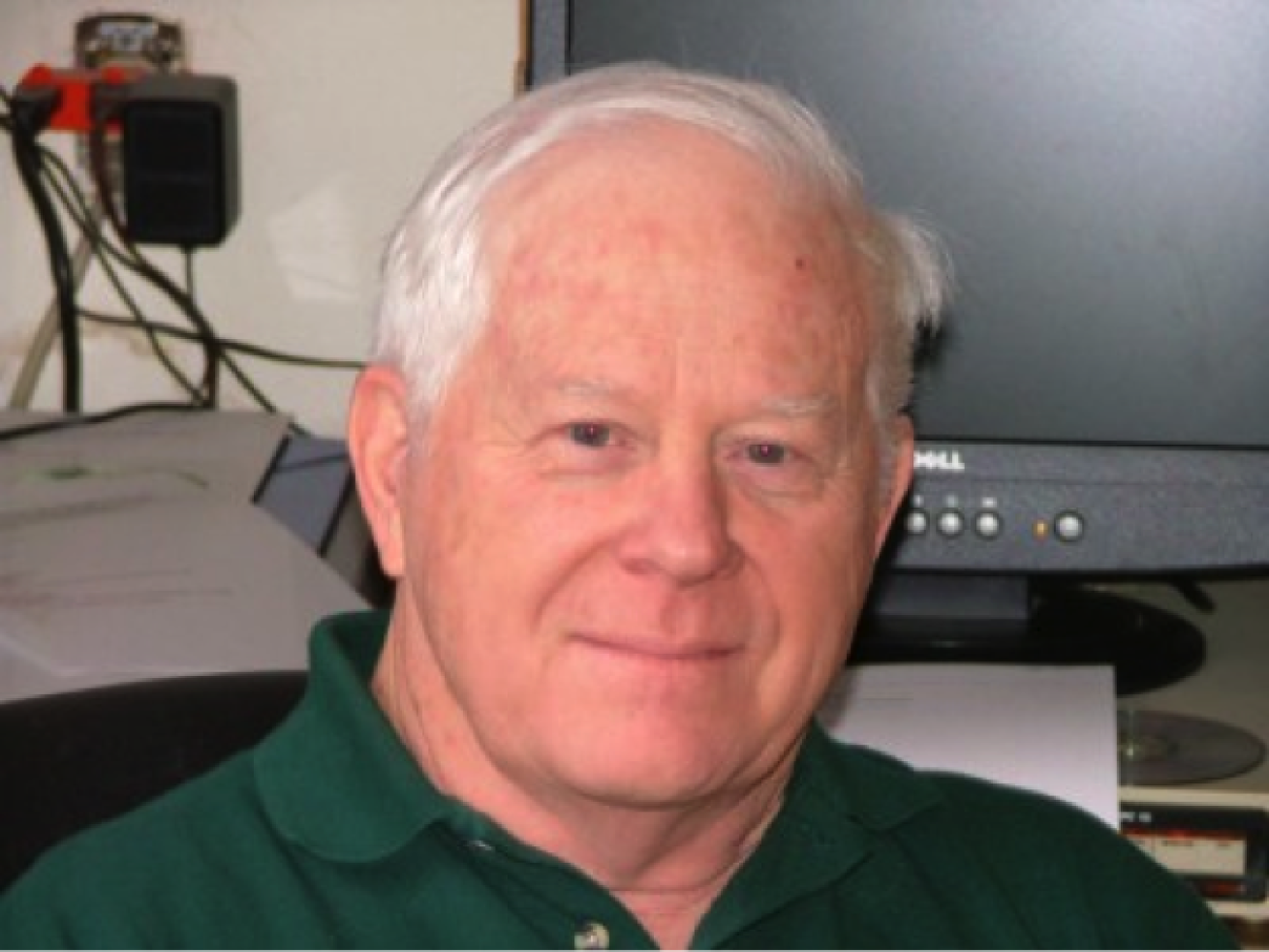
International Scuba Diving Hall of Fame.
Inductee: Bill High
Significant career achievement or industry contribution
A NAUI Instructor since 1961, Bill High has certified thousands of students into the scuba diving world. He has also been a major contributor to underwater science and the environment. He has been a leader and researcher in four major underwater habitat projects as well as being an innovator in the development of standards for scuba cylinder inspection and safety.
It would take several volumes to cover Bill High’s accomplishments and entire diving career, which dates from the 1950s to today. Bill was with the dive industry early on – before it really was an industry. In 1955, he served as President of the Washington State Council of Divers, Vice President of the Underwater Society of the America from 1961 to 1966, and President of the Pacific Rim Underwater Federation 1964 to 1968. A NAUI instructor since 1961, over his career Bill has issued more than 8000 certifications. He has served, variously as a NAUI branch manager, on its board of directors, as president of the NAUI board and on NAUI’s board of advisory for more than 20 years.
Besides being prolific in teaching diving over the years, Bill has at the same time contributed to underwater science and the environment. Among his numerous accomplishments, he was NOAA’s first National Diving Coordinator, and he wrote the first dive programs for both NOAA and the National Marine Fisheries Service. He was a mission leader and researcher in four major underwater habitat projects – Tektite, Edalhab, Helgoland and Hydrolab. As a researcher, Bill has helped the oceans through his study of fisheries, both as a diver and from submersibles. Bill’s tuna net dives were among the first to study and photograph dolphin by-catch fatalities, -- a major contribution to national boycott that changed the way tuna fleets operate. His published study of the halibut fishery led to new catch methods that not only reduced fatalities among uncaught fish, but lowered injuries among fishermen. His underwater observations of crab traps contributed to the inclusion of biodegradable nets so that lost traps don’t become perpetual killing machines.
Never one to rest on his laurels, more recently Bill has turned his attention to other dimensions of diver safety. The founder of PSI – Professional Scuba Inspectors – over the course of 26 years, Bill pioneered, researched and developed an 18-step process for visually inspecting scuba cylinders that has become an industry standard. Today, PSI has trained more than 22,000 people and taken thousands of potentially unsafe cylinders out of circulation. It is impossible to say how many divers Bill has spared from injury.
Although Bill avoids the limelight, over the years he’s been recognized many times, including awards from both NAUI and PADI. And, he’s the only diver to receive three NOGI Awards in his career.
The terms diver, educator, researcher, scientist, adventurer, explorer, innovator and environmentalist all fit Bill High.
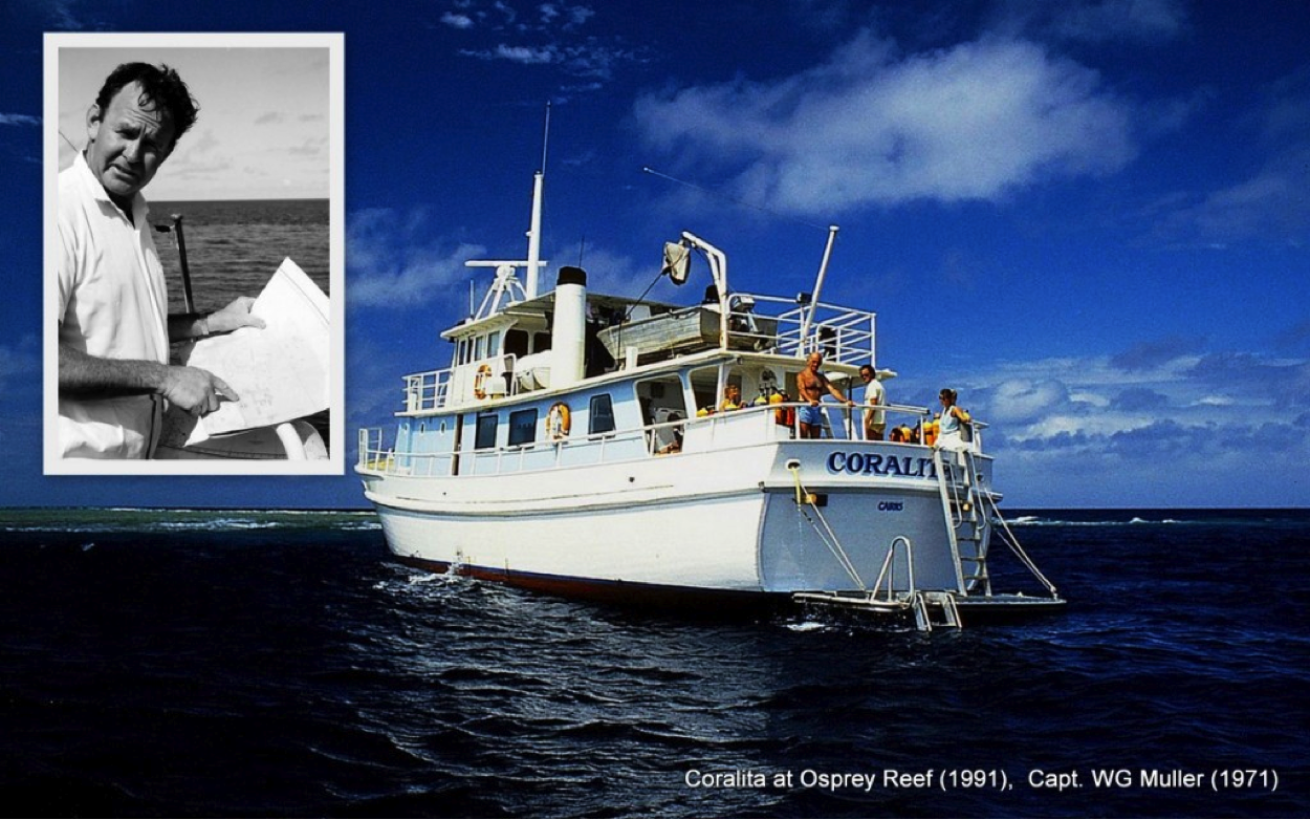
International Scuba Diving Hall of Fame.
Inductee: Captain Wally Muller, Yeppoon, Queensland
Significant career achievement or industry contribution
Captain Wally Muller was a long-time fisherman, who explored reefs in the Great Barrier Reef’s Swain sector and the distant oceanic Coral Sea atolls which other captains avoided. Many of those areas were uncharted, and considered too dangerous to enter. Muller fished commercially, then later took out fishing parties for several years aboard his first boat, Riversong.
In 1969, Wally and a partner built the 79-foot Coralita as a twelve-person live-aboard fishing and diving charter boat, The early interest by divers to reach the remote atolls out in the Coral Sea led Wally to greatly reduce his fishing exposure and concentrate on divers during seasons when the long crossings out to sea were tolerable. Many overseas guests remember lying on the salon floor on their mattresses as the boat rolled for eighteen hours. World-class diving came at a price!
In 1972, Americans and other overseas divers began chartering Coralita through See & Sea Travel, which soon reserved Wally’s entire prime season and filled the October-December season for the next decade.
Captain Muller’s skills were such that he could always find the prime Coral Sea atoll, Marion Reef, which lay some 300 miles off Yeppoon on the Queensland Coast. This was in the days before GPS, so Wally simply calculated the tides and headed out by dead reckoning. Two overnight cruises later, divers arrived at what was in those days the clearest-water diving in the world.
Marion Reef had a northern tip called Action Point, where the shark action was explosive. Several film-makers shot their underwater scenes at Action Point because the clear water made the screen action more potent for theater-goers.
Captain Wally Muller single-handedly established and developed the entire live-aboard industry in Australia’s outer Great Barrier Reef and Coral Sea.
Wally Muller built Coralita which was launched in 1969. Originally it was intended as a cruise boat working the islands and reefs offshore on the southern end of the Great Barrier Reef. The vessel, while being an excellent open sea craft was prone to ‘rocking wildly’ at anchor. Tourists were often seasick. Wally Muller then turned to fishing and diving charters. Through his friendship with Ron Taylor and John Harding (then the founding editor of FATHOM) he was able to attract local and overseas scuba divers, especially from USA. Hollywood producers seeking shark scenes obtained these in The Coral Sea. Wally returned to Saumarez Reef several times and found a magnificent bommie in 100 feet of water that rose to 30 feet under the surface. Modestly named “Wal’s Bommie” it was for a short time one of the best scuba dive locations known. Today the location would be ‘lost’. Although Wally Muller chartered and named many reefs in The Swain Reefs, only one retains one of his original names “Riversong Cay”.
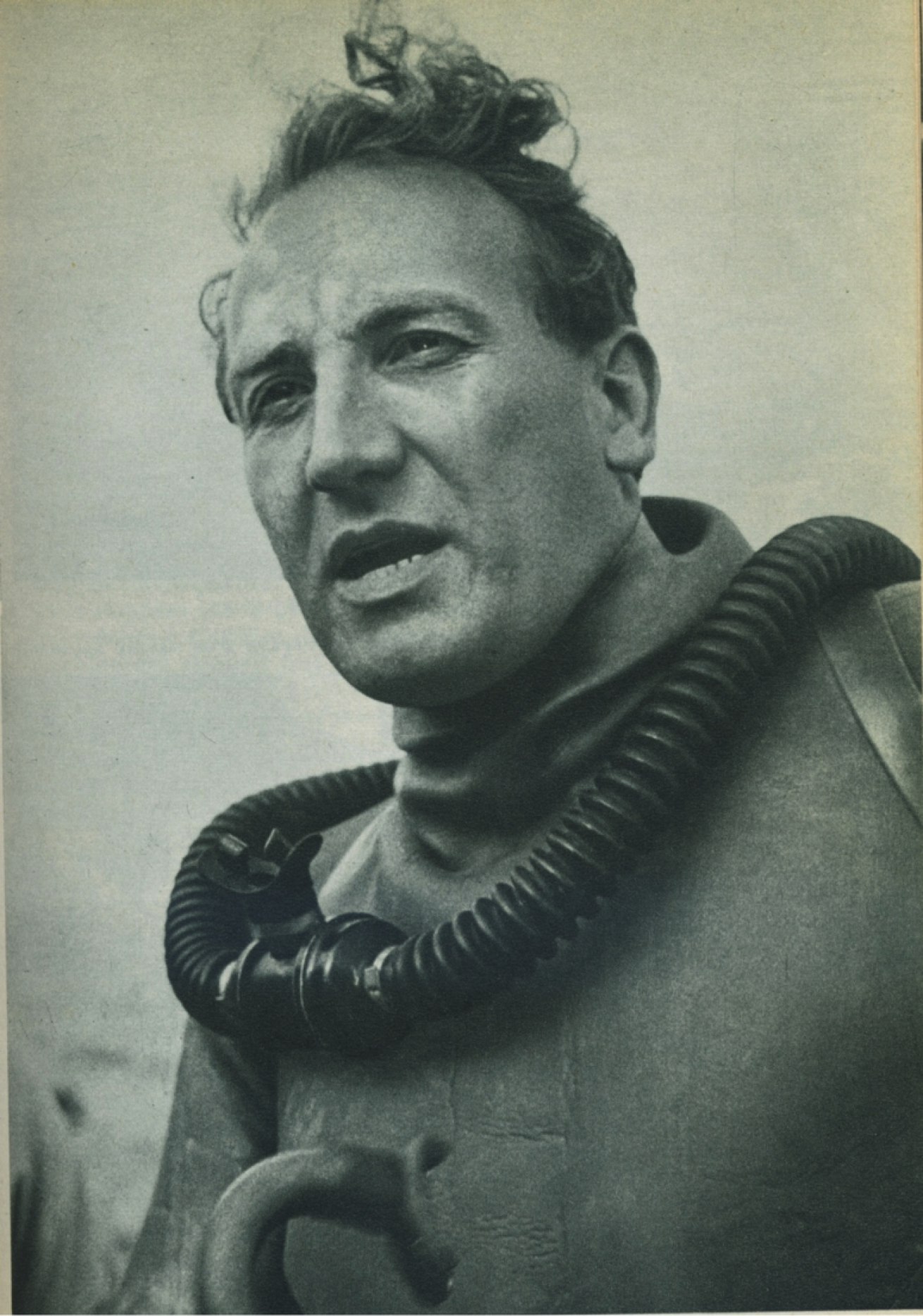
International Scuba Diving Hall of Fame.
Pioneer Category: Dimitri Rebikoff, France, 1921 - 1997
Significant career achievement or industry contribution
Developed and manufactured the first portable electronic u/w flash (1947) developed and constructed the first underwater scooters (1952 the Torpille, and later the Pegasus) and first remotely operated vehicle (ROV). Was an active member of Club Alpin Sous Marin (the first recreational aqualung diving club), developed u/w camera’s for J-Y Cousteau and other pioneer divers. Authored Exploration Sous-Marin in 1952 (a year before Cousteau’s The Silent World), La Practique du Flash Electronicque, in 1955, En Avion Sous la Mer in 1956, and co-authored Underwater Photography with Paul Cherney in 1965. Eventually moved to the USA and worked on various secret projects for the US Navy
Career biography
Dimitri Rebikoff was born in Paris, France to Russian parents in 1921. He began working with cameras at age 11 and started his own camera repair business. He spoke Russian, English, German and French and enrolled at the Sorbonne to study engineering and physics before being appointed chief engineer of Radio Control in Lyon. In 1943 he was taken prisoner by the invading German’s and drafted into the Occupied French Army. Rebikoff was assigned to a Munich Radio-Klinik, where, when he wasn't repairing Nazi radios, he spent a good deal of his time fixing shortwave sets for customers to listen to the BBC.
As the war was ending, Rebikoff stole a camera and made his way back to the newly liberated Paris, where he began picking up work as a photographer for the tabloids, specializing in color. He designed and patented the first electronic flashtube in Europe, the Eclatron, which was followed by the Ikotron, a professional electronic flash unit licensed and made by Zeiss in Germany. He manufactured and patented the widely known Rebikoff Colorimeter and designed the first 25,000 watt-second electronflash studios for Draeger in Germany and Studio Jean Chevalier in Paris.
With his wife Ada Niggeler he joined the world’s first aqualung scuba diving club, Club Alpin Sous Marin in Cannes, France in the late 1940’s. He soon started developing underwater cameras, lighting units and diver vehicles. During this period he developed the first underwater electronic flash unit and received Swiss and French patents. In 1949 he patented his famous Torpille, the electronic flash torpedo designed for underwater work, a model of which is in the International Scuba Diving Hall of Fame Museum. In 1950 he made possibly the first undersea motion pictures in color with his continuous light source movie torpedo and followed this early success with several more underwater color movies. His color documentary film Coral Palace was selected for the Scientific Film Award at the International Film Festival in Cannes in 1952.
He developed and manufactured the Pegasus underwater scooter a towing device and also as a flying platform to shoot underwater movies from. Rebikoff initially developed the Pegasus because he was a poor swimmer but wanted swift manoeverability to film underwater. In designing the machine he consulted designs from early aeronautical engineers, who studied flight by observing the physiognomy of birds. Rebikoff studied sharks, the most efficient of nature`s swimming machines. The Pegasus drew the attention of the U.S. Navy who ordered several of them.
To make deep-water exploration possible Rebikoff devised the remote-controlled Pegasus. It was quickly taken up by scientists, who sent it under glaciers to explore fossil life, and by oil drillers, who sent it to the ocean floor. Rebikoff held more than 60 patents, and worked on corrective lenses for underwater photography. He developed a good reputation for his detailed work and cameras became highly sought after by early underwater film-makers and photographers.
He and Ada moved to Florida in 1960 where he worked on secret projects for the U.S. Navy. He died in Florida in 1997. Dimitri Rebikoff’s achievements in underwater technology are kept alive through the Rebikoff- Niggeler Foundation at www.rebikoff.org.
Submitted by Leslie Leaney and Sid Macken.










